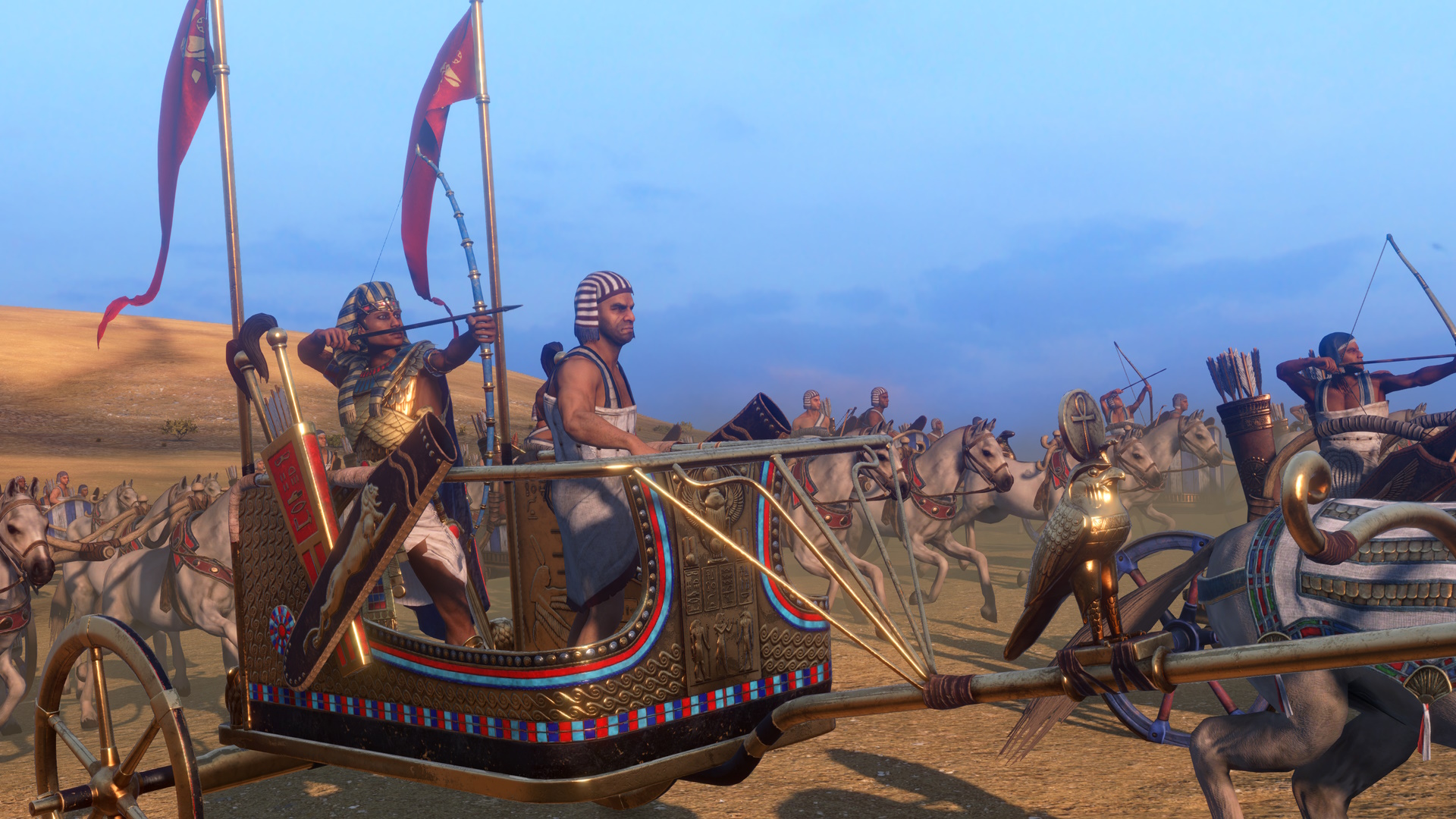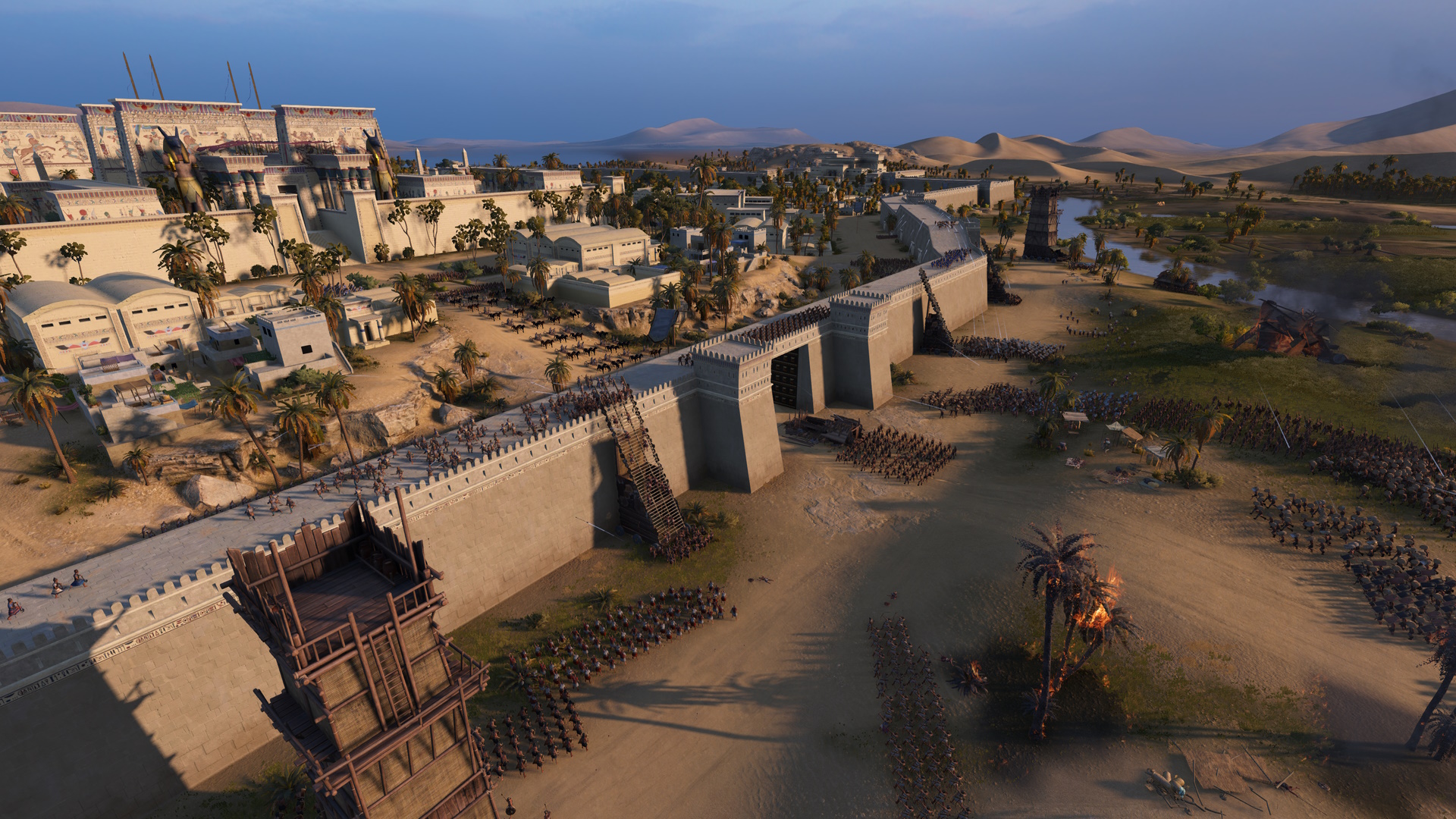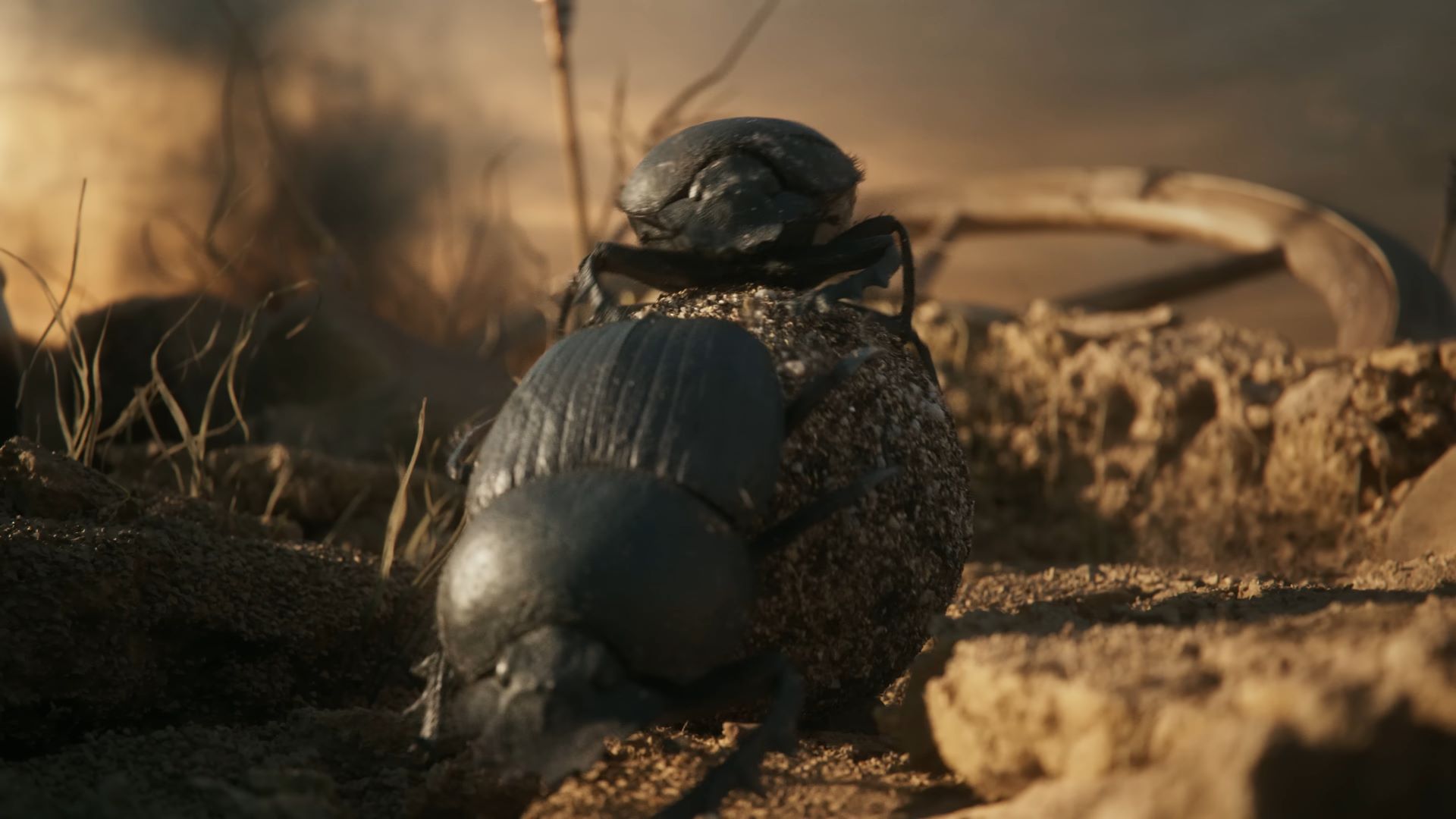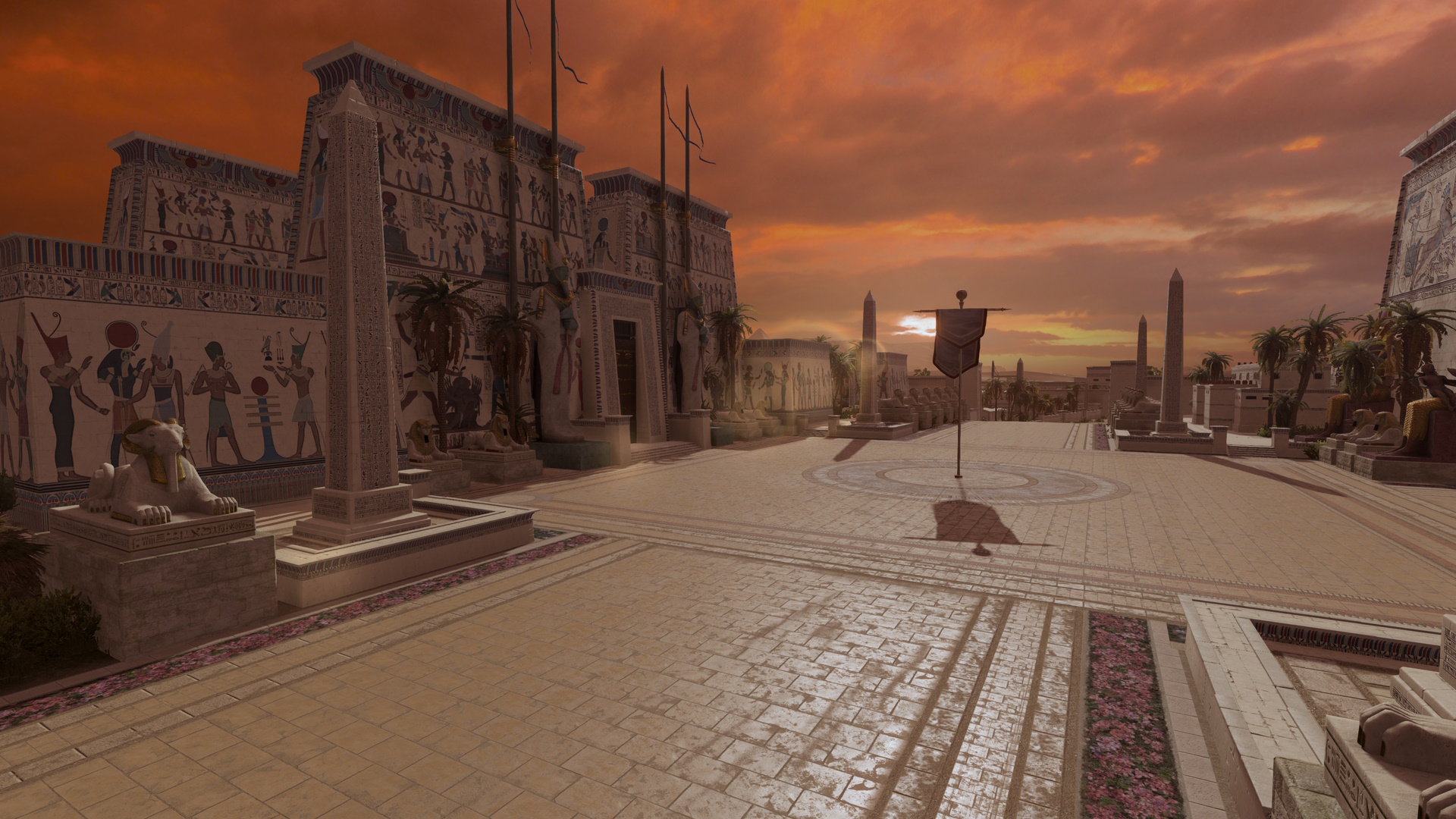Total War: Pharaoh's battles made me rethink everything I thought I knew about Total War
Hands-on | Total War's gone to ancient Egypt for something new

Despite being a veteran of the Total War franchise, my first inclination in any given battle is to rush into melee and let the gods (depending on the setting) sort it out. Actually, perhaps this is because I am in fact a veteran of the Total War franchise. Either way, this normally works out fine, if not as well as it would have had I been more careful and dutiful. But I reckon my brief, recent experience with Total War: Pharaoh may have rid me of this behavior forever, given the changes and tweaks to battle. And while humbling, this is also extremely exciting.
Historically, individual battles in previous Total War games come down to two things: who has more troops, and who has advantageous positioning. While both are still extremely important here, neither seem like a guarantee in Total War: Pharaoh. Admittedly, my experience is colored by the fact I played three distinct scenarios explicitly designed by the team to showcase the game's changes, but if every encounter features even a sliver of the same sort of thing, it feels like it'll be a fairly major shift.
The big takeaway is that, at least in battle, the team at Creative Assembly Sofia has aimed to slow the pacing of Total War: Pharaoh. While that might sound counterintuitive at first, the idea is that there are fewer, more meaningful decisions to make during the thick of things, as opposed to having to constantly micromanage a dozen different sets of units whenever possible. That doesn't mean things are actually slower, granted, just that the expectation Pharaoh has of its players is less directly intense.
Sunny Tzu


Total War: Pharaoh announced with dung beetle wrestling, so you know it's going to be a banger
Dynamic weather and terrain in Total War: Pharaoh means the initial choice of where to fight, when, and how is much more important. There are still stances and explicit instructions – like whether or not to fire at will, for example – that can be given to individual units, but whether you're fighting in the rain, or mud, or on a clear day on a hill, is ultimately going to have much more say in the battle's outcome.
Take, for example, one of the three prestaged battles offered during my brief hour or so with Total War: Pharaoh. Of the three, this was the only one I played a second time, and I only did so because I lost overwhelmingly the first time. I kept the initial, automated positioning of units and quickly grouped them together before starting in earnest – but didn't bother to pay much more attention than that at first.
The one and only thing I had going for me during my initial foray was the fact that I'd waited for the enemy to come to me, rather than rushing out to meet them, but that's about it. I didn't watch where the dirt turned to swampy wetland, and it cost me dearly as my heavily armored units struggled and exhausted themselves against my more-nimble foes. It was a hard lesson, but one I took to heart when I explicitly moved my formations the second time around so that the wet, muddy ground would have to be crossed by my enemy in order to even engage my frontlines.
"What we wanted to do for the battles is make them authentic, make them realistic, make the choices matter in the battles, and make them dynamic," says Total War: Pharaoh battle designer Hristo Enev when asked about balancing all of this. "By this I mean we want the players to adapt to new situations. That's where the dynamic weather comes in. So the player, when the weather changes, you don't have a choice. Sometimes you can wait for better weather, but sometimes you just can't, and the weather changes and you might find it more favorable for you."
Weekly digests, tales from the communities you love, and more
Enev points to, for example, troops that are perhaps good at fighting in deserts or sandstorms. Maybe you want to wait for a sandstorm to hit before engaging the enemy, given that, but there's no guarantee that your timetable will line up. So, you have to make a call: fight now definitely without a bonus or fight later potentially with one.
"The goal is for the player to take into account, as they plan their few impactful choices, the weather and the terrain – because the weather can also affect the terrain – the unit composition and the armor degradation, and terrain elevation and the usage of fire," says Total War: Pharaoh game director Todor Nikolov.
"More planning beforehand should lead to a better battle," adds Enev. "That doesn't mean you can't turn around a losing battle with the choices that you make afterwards, but we want to have more big, more impactful choices."
There are almost certainly further changes from previous Total War titles in Pharaoh – and to be clear, this is not a smaller, Saga-branded game – but the only other major one worth mentioning from my preview was the reworked Victory Point system. Basically, sieges have been a huge pain in other Total War titles with defenders stuck trying to keep enemies out and then simply guarding chokepoints once the walls were breached.

"Previous Total Wars had only one Victory Point. You capture it, and the timer ticks, and you win the battle. We upgraded that to three Victory Points, which allow for different ways to play a battle because each Victory Point has a specific effect linked to it."
In Pharaoh, however, or at least the version of it I saw and played, there are now multiple areas in a given settlement that can be captured to provide different bonuses, including the typical center of a town that might have been the only capturable point in previous Total War titles. If you're familiar with previous Total War entries, it's sort of like the developers went and made guard towers much more interesting.
In practice, this meant that I was pulled between supporting my troops guarding the walls in order to keep more invaders out while trying to run down those that already got inside in order to prevent them from controlling major portions of my settlement. Do I leave my archers on the wall to snipe stragglers to the west or do I pull them into the city proper in order to thin the ranks of those enemies closing in on a capturable point? Do I peel off my faster units from one part of a battle in order to chase down an enemy unit on the opposite side of the settlement? Even now, I'm not sure which of those options was the best one.
"Previous Total Wars had only one Victory Point," says Enev. "You capture it, and the timer ticks, and you win the battle. We upgraded that to three Victory Points, which allow for different ways to play a battle because each Victory Point has a specific effect linked to it."
One in every major city, for example, provides a morale bonus, but only to those that currently own said Victory Point. There's another that repairs armor while yet another replenishes stamina, and it sounds like not all sieges will have the same set of effects. Capturing all three Victory Points is required to win, and it certainly seems like it is simpler said than done.
Though they were all 100% tailor-made scenarios meant to highlight all of this, it made for a compelling demonstration of what Total War: Pharaoh wants to accomplish. And that's just the battle aspect of it; we've not even seen what the broader campaign really looks like as of yet. The truth is that absolutely everything in life, but especially media of any kind, is competing for the same thing: attention. The kindest thing I can say about Total War: Pharaoh in the wake of my preview is that I still want to see even more.
Total War: Pharoah is set to release for PC in October 2023, but if you're looking for other titles there are plenty of new games coming in 2023 if strategy titles aren't your kind of thing.

Rollin is the US Managing Editor at GamesRadar+. With over 16 years of online journalism experience, Rollin has helped provide coverage of gaming and entertainment for brands like IGN, Inverse, ComicBook.com, and more. While he has approximate knowledge of many things, his work often has a focus on RPGs and animation in addition to franchises like Pokemon and Dragon Age. In his spare time, Rollin likes to import Valkyria Chronicles merch and watch anime.


